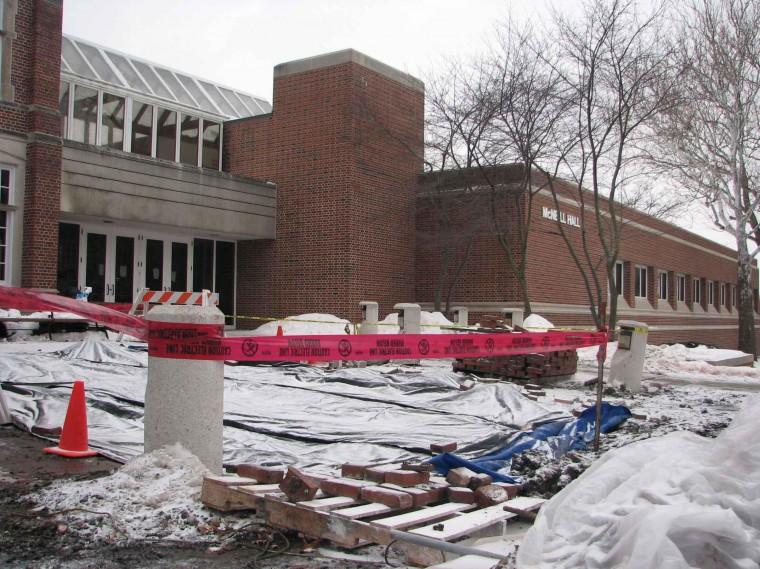Steam leaks prove ‘inconvenient,’ costly
February 11, 2011
As winter continues for Simpson students, faculty and staff, it should be no surprise that repairs on the college’s steam leaks continue as well.
With large repairs for leaking pipes in front of Mary Berry Hall and McNeill and Hillman halls, the phenomenon presents an inconvenient aspect of campus life. According to Gary Dooley, assistant director of campus services, the number of this year’s steam repairs total is at five, however, some of the repairs proved tough due to circumstances such as locations of underground cables.
“The stress involved in one of these is unbelievable,” Dooley said. “If we severed a phone line, we could knock out all the phones in all the dorms at once and then it takes many days to splice that thing back together.”
The weather also played a large part in holding up some of the repairs.
” We have to take a lot of things into consideration when we have a leak as to when we go after it – we’d be digging on a steam leak right now if we didn’t have a forecast of subzero weather,” Dooley said.
Even for a person unfamiliar with the science of steam, the cause of the leaks remains simple. Over many years and due to any presence or combination of corrosion, metal fatigue, abrasion or friction, the pipes’ walls become thin, eventually allowing the pressurized steam to burst through.
Not only do these repairs cause stress for Campus Services, they take a toll on the college financially as well. According to Ken Birkenholtz, vice president for business and finance, the typical repair costs $4-5,000, while a larger repair that involves pouring concrete costs $15,000 or more.
“We have a budget to operate our heat plant (which generates steam to heat most of the college’s buildings) that has $50,000 in it for repairs,” Birkenholtz said. “We’re definitely going to go over our budget for steam leak repairs this year, but the good news is (the cost of) gas is not where it’s been in past years so we’re going to have savings in the gas budget and will still be within those two budgets.”
Although students may not immediately see the efforts, both Campus Services and Birkenholtz say the college continues moving in a better direction towards handling the leaks in a more physically and financially sustainable manner.
Campus Services now focuses on replacing any worn pipe in the vicinity of the leak, rather than simply patching an isolated hole, which is different than years past.
“Twenty-four years ago when I started here you would dig down there, put a clamp on the hole and fill it back in,” Dooley said. “We just don’t do that anymore.”
However, with more extensive and quality repairs, there are some disadvantages.
“Over the last couple years, our costs have increased,” Dooley said. “We’re trying to get better results that will last long term.”
While repairing the leaks can have consequences on heating in buildings and in general detract from the walk through campus, overall the leaks pose little problems to student activity. According to senior Sarah Keller, who spends significant time in the art center (a building affected by one of the leaks), the leaks have little affect.
“They’re a nuisance to walk by everyday but once you’re in the art building you can’t tell any difference in the heating,” Keller said.





